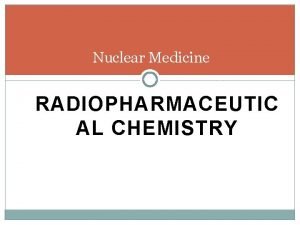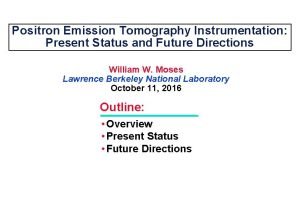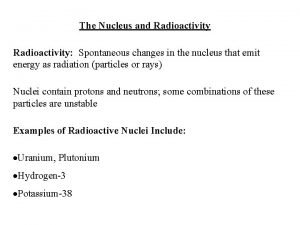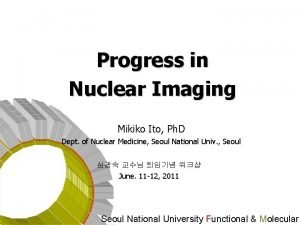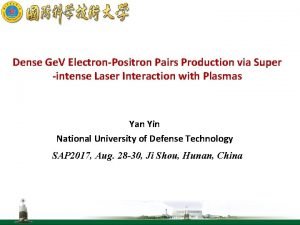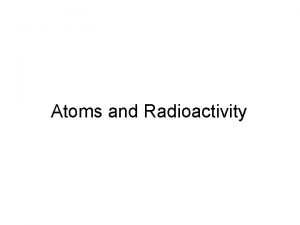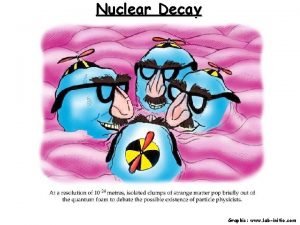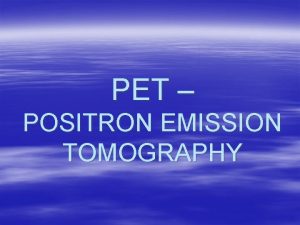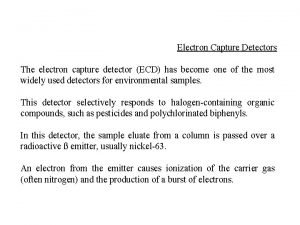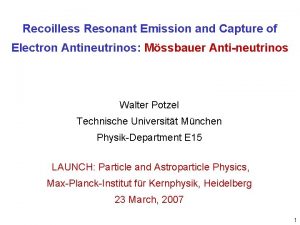Positron Emission Gamma and Electron Capture Positron Emission










- Slides: 10

Positron Emission, Gamma, and Electron Capture

Positron Emission • A positron is essentially an electron that has a positive charge instead of a negative charge. • A positron is formed when a proton in the nucleus decays into a neutron & a positively charged electron. • It is then emitted from the nucleus. • The positron is a bit of antimatter (seen in Star Trek). When it comes in contact with an electron, both particles are destroyed with the release of energy.


Positron Emission = Loss of a positron (a particle that has the same mass as but opposite charge than an electron) 0 1 11 6 Atomic # decreases by 1 # of protons decreases by 1 # of neutrons increases by 1 Mass # remains the same C e 11 5 B + 0 1 e

Positron emission occurs when an unstable nucleus emits a positron. As the emission occurs, a proton turns into a neutron.

Positron emission tomography, also called PET imaging or a PET scan, is a diagnostic examination that involves the acquisition of physiologic images based on the detection of radiation from the emission of positrons. Positrons are tiny particles emitted from a radioactive substance administered to the patient.

Gamma Radiation • Gamma radiation is similar to x-rays – high energy, short wavelength emissions (photons). • The symbol is γ, the Greek letter gamma. • It commonly accompanies alpha and beta emission, but it’s usually not shown in a balanced nuclear reaction. • Some isotopes, such as Cobalt-60, give off large amounts of gamma radiation. • Co-60 is used in the radiation treatment of cancer…the gamma rays focus on the tumor, thus destroying it.

Gamma radiation occurs when an unstable nucleus emits electromagnetic radiation. The radiation has no mass, and so its emission does not change the element. However, gamma radiation often accompanies alpha and beta emission, which do change the element's identity.

Electron Capture • Electron capture is a rare type of nuclear decay in which an electron from the innermost energy level (1 s) is captured by the nucleus. • This electron combines with a proton to form a neutron. • The atomic number decreases by one but the mass stays the same. • Electrons drop down to fill the empty space in the 1 s orbital, releasing energy.




